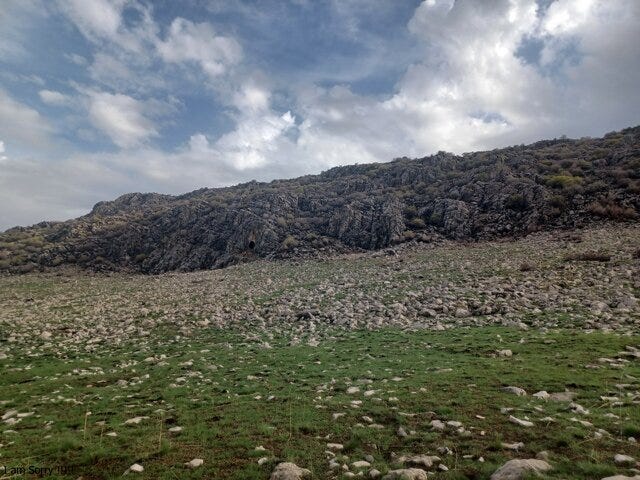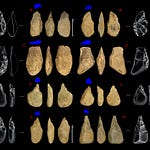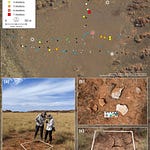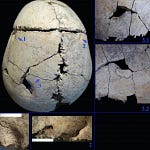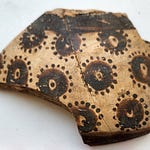In a craggy fold of the central Zagros Mountains, archaeologists braced against time, weather, and destruction. At Kunakhera Cave1 — its silence punctured by looters and erosion—they found traces of a world long buried: chipped stone tools, scorched animal bone, blackened hearths. These were not casual signs of occupation. They told a deeper story—of Homo neanderthalensis surviving, hunting, and perhaps even dreaming in the highlands of western Iran some 40,000 to 80,000 years ago.
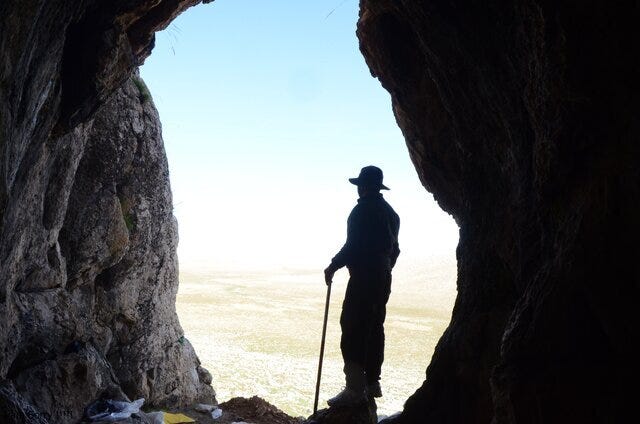
The work began as an emergency. Illegal digging and natural degradation had threatened to erase whatever remained at Kunakhera. A team led by Iranian archaeologist Nemat Hariri secured permission from the Cultural Heritage and Tourism Research Institute to excavate what they could before it was too late.
“The aim was twofold,” Hariri said. “To rescue the site’s archaeological record from further damage—and to ask scientific questions about the Paleolithic landscape and those who once moved through it.”
Mousterian Tools and the Weight of Memory
The artifacts came quickly. Flakes and cores aligned with the Mousterian technological tradition—a hallmark of Neanderthal craftsmanship—emerged from the stratified sediment. Layered ash and blackened earth pointed to repeated use of fire. Nearby, fragments of bone bore the unmistakable scoring of stone knives, and traces of heating.
“The tools and the bones appear together in spatial patterns that suggest deliberate activity around hearths,” Hariri noted. “We’re not looking at a single event, but recurring use—perhaps seasonal.”
The faunal remains read like a late Pleistocene field guide. Cave bears, wild equids, goats and sheep, jackals, rabbits, and even freshwater turtles were all present. The presence of multiple prey species—not just large game—speaks to a flexible, opportunistic approach to subsistence, and to a group skilled at surviving in a harsh, high-altitude environment. Kunakhera lies around 1,800 meters above sea level, close to the ancient snow line. This is no easy landscape to inhabit.
A Wider Paleolithic Landscape
The sediment at Kunakhera mirrored that of a more famous neighbor: Bawa Yawan, a rock shelter not far away. Known for its Mousterian assemblages and, more recently, Paleolithic rock art, Bawa Yawan has been central to understanding human presence on the Iranian plateau. Now, with Kunakhera added to the map, archaeologists are revisiting assumptions about how often—and how long—Neanderthals occupied the region.
Saman Heydari-Guran, one of Iran’s foremost Paleolithic scholars, emphasized the symbolic weight of Bawa Yawan. Recent discoveries of rock motifs there—some interpreted as linked to fertility or childbearing—hint at more than subsistence. They point toward symbolic behavior, toward culture.
“These motifs,” Heydari-Guran explained, “are comparable to European Paleolithic art in form and content. They open a rare window into the cognitive world of early humans in this region.”
Radiocarbon dates from the shelter’s associated layers suggest an age of around 13,400 years for the art. While that postdates the Neanderthal horizon, it speaks to a long tradition of human occupation and perhaps cultural continuity or echo.
Rethinking Neanderthal Lives
If Kunakhera reinforces anything, it is the persistence and adaptability of Neanderthals in western Asia. For decades, they were caricatured as brutish and doomed—a hominin footnote. But data like this push back against that image.
Recent work across Eurasia has steadily revised the Neanderthal story. We now know they crafted composite tools, made symbolic markings, buried their dead, and interbred with Homo sapiens. Kunakhera adds another dimension—showing how these hominins adapted not just to temperate Europe but to the rugged, high-altitude ecologies of the Iranian plateau.
“The emerging view is one of Neanderthals as sophisticated hominins,” Hariri said.
“Not biologically inferior, but behaviorally complex.”
Kunakhera is unlikely to be the last word. But its survival, thanks to a rescue mission launched in urgency, offers new terrain for paleoanthropologists. It adds another stone to the mosaic of human evolution—a mosaic not centered on any one region, but scattered across plains, shelters, and wind-carved caves.
Related Research
Here are several related studies that provide context and comparative insights into Neanderthal adaptation, cognition, and occupation in Asia and beyond:
Leder, D., et al. (2021). “Persistence and replacement in the late Middle Paleolithic of the Iranian Plateau.” PLOS ONE, 16(1): e0244945. https://doi.org/10.1371/journal.pone.0244945
A detailed study of lithic variability and occupation continuity across Paleolithic Iran.
Roebroeks, W., & Soressi, M. (2016). “Neandertals revised.” Proceedings of the National Academy of Sciences, 113(23), 6372–6379. https://doi.org/10.1073/pnas.1521269113
A reassessment of Neanderthal cognitive and cultural capacities.
Nishiaki, Y., et al. (2020). “Late Middle Paleolithic stone tool technology in the Zagros: Insights from the Darband Cave.” Journal of Archaeological Science: Reports, 33, 102549. https://doi.org/10.1016/j.jasrep.2020.102549
Focuses on lithic strategies in a comparable Zagros cave context.
Ruebens, K., et al. (2015). “Regional behaviour among late Neanderthal groups in Western Europe.” Nature Communications, 6, 6348. https://doi.org/10.1038/ncomms7348
Documents cultural diversity and regionalism among late Neanderthals.
Traces of Neanderthal presence discovered in cave, western Iran. (2025, May 4). Tehran Times. https://www.tehrantimes.com/news/512609/Traces-of-Neanderthal-presence-discovered-in-cave-western-Iran


